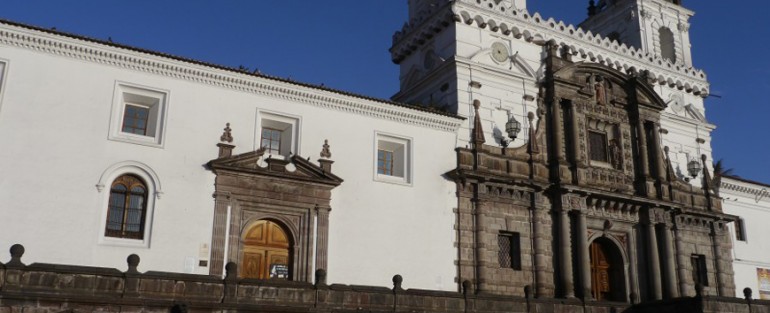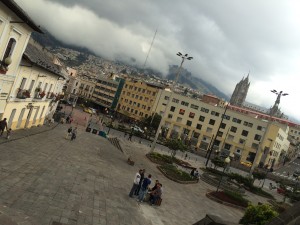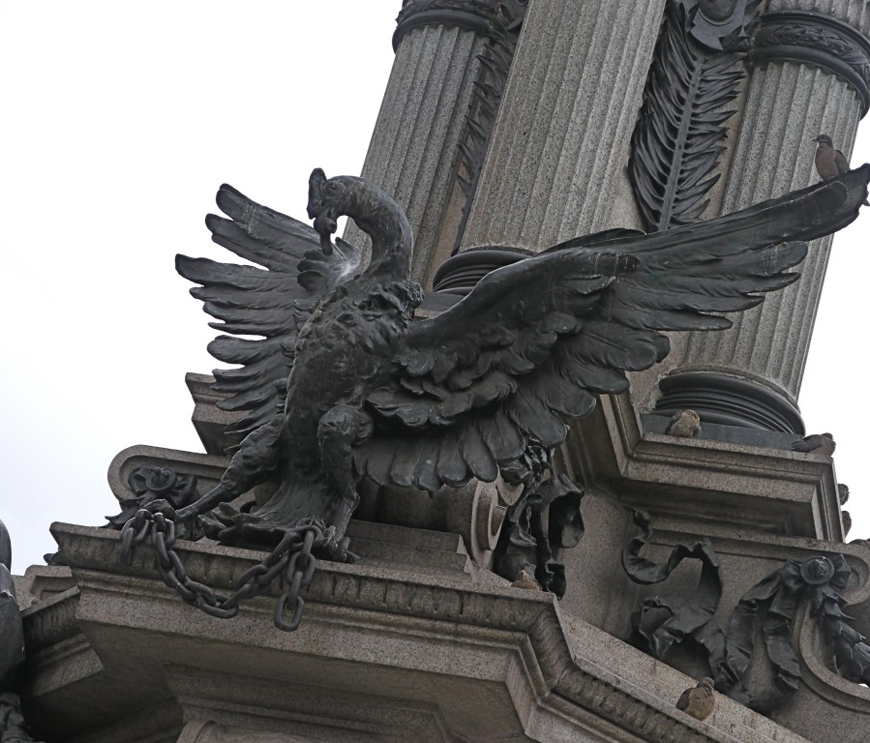
Exploring Quito, Ecuador
Most tourists to Ecuador spend just one night in Quito, a stopover on their way to see the Galápagos Islands. This is a mistake. Quito has plenty to offer (not to mention day tours outside of the city) and you’d be wise to book several days to explore its highlights. Quito’s historic centre (along with Krakow) was the first world cultural heritage site declared by UNESCO — and they knew what they were talking about.

While Quito once had a reputation for street crime, it has been all but eradicated. You’ll find smiling police in every plaza and on most street corners. There are only a few places that tourists should choose a taxi over walking. One of these is El Panecillo, one of the hills overlooking the city. It is the views from the hill, and of the 41 meter winged Virgin Mary atop it, that are of interest anyway, not the climb. Plus, if you’ve just arrived in Quito, you’re likely to huff and puff on any incline, as this city is 2800 meters (9350 feet) above sea level. Take a taxi to enjoy the views.
But other than these a few no-go zones, Quito is a lovely city for walking. It has stunning architecture, much of it extremely well preserved, many parks and plazas, and plenty of delicious stops for snacks along the way.

I highly recommend a walking tour of the historic centre with Peter Lennon. Peter will take you to the well-known and the lesser-known highlights of the UNESCO zone’s 40 churches and 17 plazas.
Plaza de San Francisco is a must-see on Peter’s tour (and if you’re staying at the stunning Casa Gangotena, you can admire the views from the rooftop terrace too). Quito’s original name was San Francisco de Quito, so you know this is an important place. San Francisco church is the oldest in the city — construction began in 1534 — and many say its Baroque exterior is the prettiest. Come back after your tour with Peter and visit the museum of pre-Colombian art, Casa del Alabado, housed in a nearby building that dates to 1671.

Peter will show you La Ronda which will be quiet when you walk through in the morning. Follow his advice and go back in the evening when the restaurants and bars open their doors and music and people spill out.
The Presidential Palace is a pretty stop (On Mondays at 11:00 a.m. see the changing of the guard and wave to the President when he comes out on his balcony overlooking the square). Nearby is the Centro Cultural Metropolitano, a museum with an ever-changing roster of national and international artists.
Something you won’t find on other walking tours: Peter will take you to meet a “taita”, somewhat like a shaman, where you can see a mind-boggling number of pre-Colombian artefacts in a private collection, as well as meet a man with a very unique history.
Peter’s walking tours are free, but tips are greatly appreciated. The tour lasts about 2.5 hours. Ideally you will let him know you’re coming in advance via Facebook, Meet Up or by emailing him (PLennon@ymail.com (yes, that’s a y not a g)), but you could just show up at Plaza San Blas (Calle Caldas and Pichincha) on weekdays to find him (Mondays at 9:30 am; Tuesdays-Fridays at 10:00 a.m.).

We recommend a lovely hotel just two blocks from Plaza San Blas — Mansión del Angel. It is on a quiet street and has a very European feel.
Another great location to stay — and still within walking distance of the historic centre — is near the nightlife of Plaza Foch. We recommend Café Cultura, a boutique hacienda-style hotel that is on the edge of the Foch district, on the side closer to the historic centre of Quito. Here you’ll also be close to the Museo del Banco Central, an excellent museum with pre-Columbian and Colonial artefacts.
If you prefer to be in a more modern neighbourhood with lots of western shops and restaurants, stay at Swisshôtel Quito. You can still take a taxi (or a long walk) to see all the Quito sites, plus you’ll enjoy a hotel with a pool, spa and sports facilities.
If you’re in Quito on a clear day (mornings often best), take a taxi to Teleferico, a cable car on the side of Pichincha volcano. You’ll get great views of the city and of six volcanoes as you ride the world’s second highest cable car (best to take a taxi to the base).
As you walk through Quito congratulating yourself on booking several days to explore, keep your eye out for condors. Condors are everywhere in Quito — on buildings, fountains, and of course on the Ecuadorian flag.
This statue in the historical district depicts a condor breaking free of its chains — symbolizing the Andean people breaking free of the Spanish (below is a lion wounded by a knife). If you have kids travelling with you, condor spotting can be a good way to keep them interested in site seeing … it sometimes works for travel companions too!.

Article and photos by Johanna Read

One Comment
Trackbacks for this post